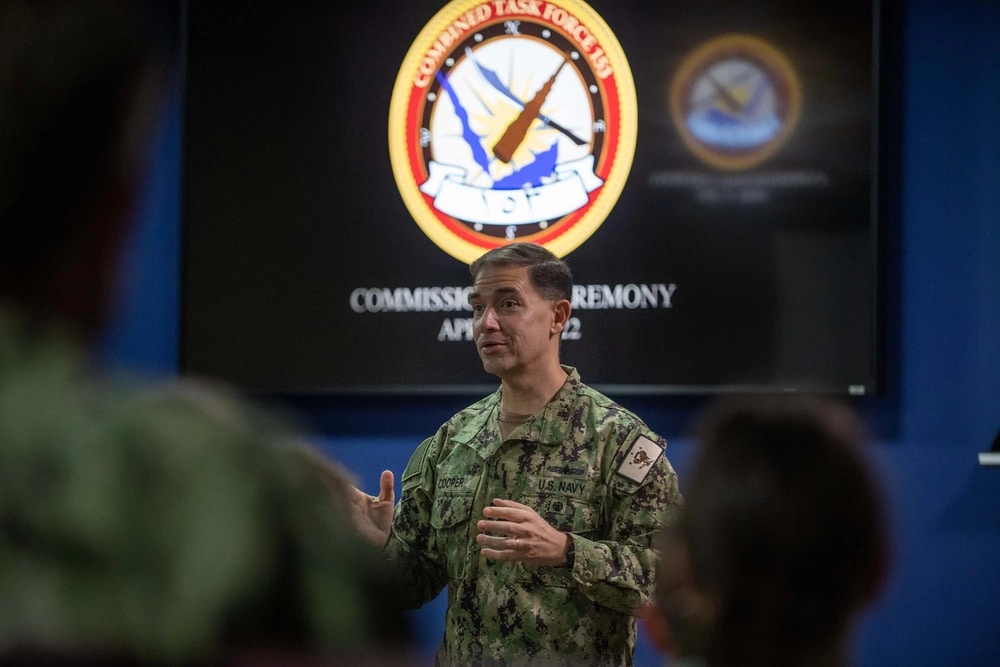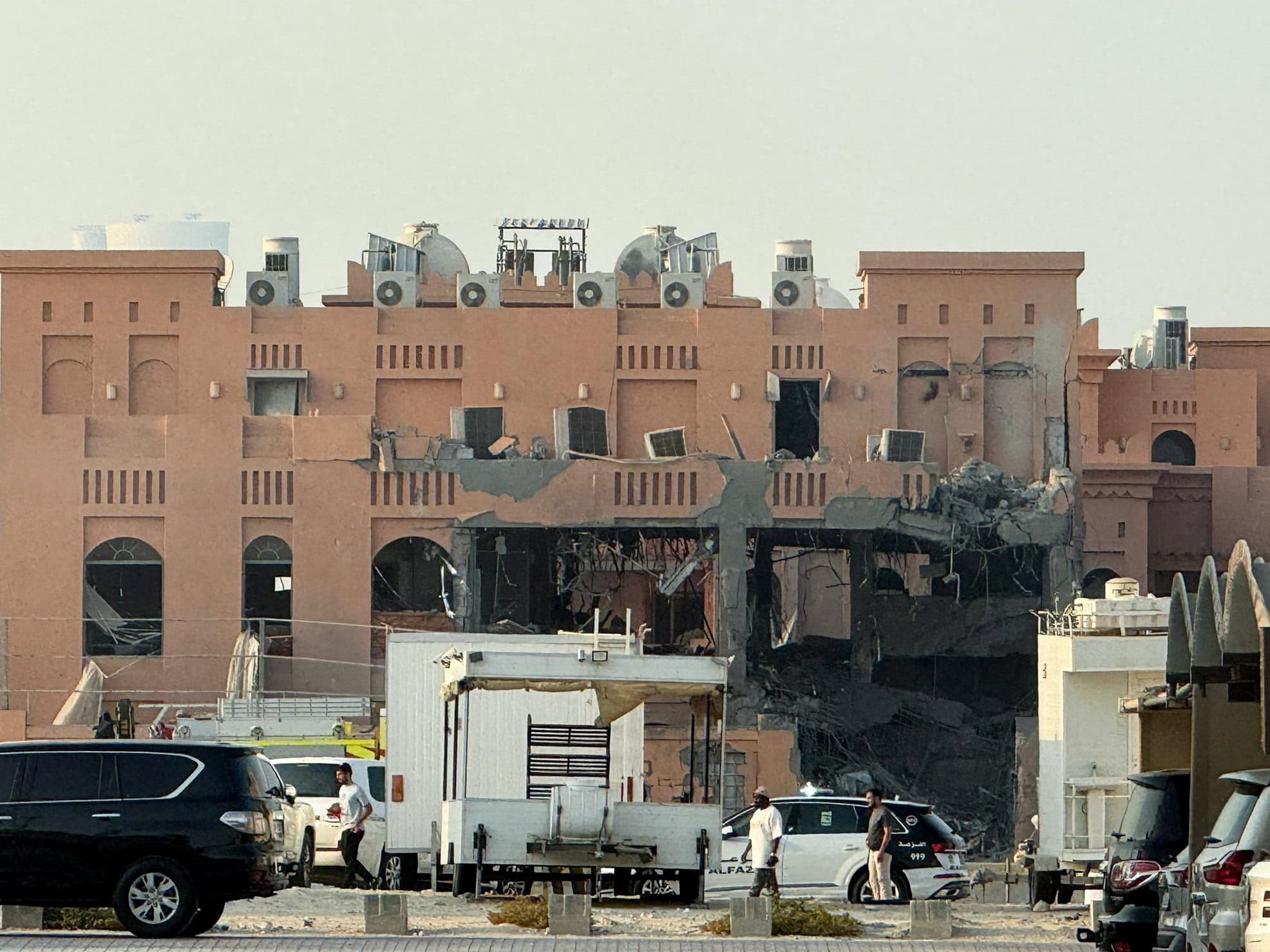
U.S. Naval Forces Central Command / U.S. 5th Fleet (Photo by Petty Officer 2nd Class Dawson Roth)
آخر تحديث في: 17-12-2023 الساعة 11 صباحاً بتوقيت عدن
Far from being a regional matter, maritime security in the Red Sea is an issue of global concern with many countries depending on it. In the wake of the Houthis' threat, the US has been seeking partners to expand the CTF-153 naval task force.
Dr. Marta Furlan (South24)
Over the past few weeks, the Red Sea has rapidly become one of the most insecure and instable maritime routes, as the Houthi - the Zaydi Shia armed group that has been controlling Sana’a and North Yemen since September 2014 - has been escalating its threats to maritime traffic in those waters.
A chronology of Houthis’ attacks in the Red Sea
Following the hijacking of the vessel Galaxy Leader on November 19, other such episodes occurred. On November 26, commercial ships with reported Israeli links were attacked in the Indian Ocean and in the Red Sea. On December 3, Houthi militia struck three commercial ships – the Unity Explorer, the M/V Number 9 and the M/V Sophie II – in the southern Red Sea using missiles and drones. On December 12, the M/V Strinda was attacked by a missile coming out of a Houthi-controlled area in Yemen. On December 10, France announced that its Navy destroyed two Houthi drones in the Red Sea headed towards the frigate Languedoc and on December 13 two missiles fired from Houthi territory were shot down by the United States Central Command in response to a distress call from the Ardmore Encounter commercial tanker in the Red Sea.
As those attacks took place, and in a show of support to the Palestinian people, the Houthis’ spokesperson declared that the group will target all ships heading to Israel, regardless of their nationality, and warned all international shipping companies against dealing with Israeli ports: “If Gaza does not receive the food and medicines it needs, all ships in the Red Sea bound for Israeli ports, regardless of their nationality, will become a target for our armed forces.”
Related: The Dangerous Houthis Escalation in the Red Sea
The repeated Houthi attacks on commercial vessels transiting through the Red Sea, particularly those with suspected links to Israel, have since forced some companies to reroute their ships away from the Bab al-Mandab Strait and the Suez Canal towards Africa and the Cape of Good Hope – a route that is much longer (almost two weeks more of navigation) and therefore much more expensive.
Towards securitization of the Red Sea waters
Far from being a regional matter, maritime security in the Red Sea is an issue of global concern. In fact, Western, Arab, and Asian countries depend on the Red Sea – which connects the Indian Ocean with the Suez Canal and onwards with the Mediterranean - for swift and affordable commercial and energy trade. Millions of tons of agricultural products and other goods pass through the Red Sea and the Bab al-Mandab Strait every year and 8.8 million barrels of oil pass through those waters every day.
As many countries are interested in protecting freedom of navigation in the Red Sea, in recent years several initiatives have been taken to strengthen maritime security there. For instance, the US-led Combined Task Force (CTF) 153 was deployed in 2022 in the Red Sea and the Gulf of Aden to secure the area (where the risk of piracy from Somalia’s coast has always been a reason of concern) and counter weapons smuggling. The CTF 135 is part of the Combined Maritime Forces (CMF), a 39-nation-strong maritime partnership headquartered in Bahrain that comprises five CTFs focused on maritime security, piracy, and training.
Most recently, in the wake of the threat to global shipping posed by the Houthis’ attacks on commercial vessels traveling near Yemen, the United States has been seeking partners to expand the CTF-153 naval task force. As stated by House National Security Adviser, Jake Sullivan, there is a need for a “maritime task force of sorts involving the ships from partner nations alongside the United States in ensuring safe passage of ships in the Red Sea.”
In the words of the US National Security Council spokesman John Kirby, “Our focus at this time is ensuring that there are sufficient military assets in place to deter these Houthi threats to maritime trade in the Red Sea and in the surrounding waters to the global economy writ large. We are also encouraging other like-minded nations to join this coalition, and we’ve actually heard some interest from several key partners.” However, no further indication was given at this stage on whom the partners who expressed interest are.
Countries overlooking the Red Sea, such as Egypt, Jordan, Saudi Arabia, and Israel would probably like to contribute. Here, the case of Saudi Arabia is an especially interesting one. On the one hand, the Saudi Kingdom depends on stable and secure waters for the success of its oil exports and its touristic mega-projects planned along the country’s western coast. As such, it has every interest to contribute to curbing the Houthis’ harmful attacks. On the other hand, however, Saudi Arabia (which prior to October 7 was discussing with Washington the possibility of a normalization agreement with Israel and which has been seeking to exit the Yemeni quagmire for the past few years) is determined to prevent the Hamas-Israeli conflict from engulfing the entire region. As such, it has reportedly urged the US to show restraint in its response to the Houthis.
Other likely candidates for an expansion of the CTF 135 are the United Arab Emirates and Bahrain, which have close relationships with the United States (even more so after the Abraham Accords) [Bahrain is already a member in the CMF meanwhile the UAE has suspended its participation in the force last May]. G-7 countries - Canada, France, Germany, Italy, Japan and the United Kingdom – would also be likely to support the task force, given their economic interests in the region and their membership in CMF. Reportedly, Australia is also considering the US request to send warships to the Red Sea.
As talks between the US and its allies on a possible expansion of the CTF135 move forward, Iran has been swift to express its opposition to such plan. Iran's Defence Minister, Mohammad Reza Ashtiani, warned that the proposed multinational task force to protect shipping in the Red Sea would face "extraordinary problems". Speaking to the Iranian Students News Agency, Ashtiani said that “"If they [the US] make such an irrational move, they will be faced with extraordinary problems. […] Nobody can make a move in a region where we have predominance.”
These comments go a long way in explaining how Iran has been using its material support to the Houthis over the past eight years to expand its influence and project its power throughout the Red Sea, which Tehran sees as a crucial maritime route to smuggle weapons to its allies in Iraq, Syria, Lebanon, and Gaza. Clearly, Iran is determined not to lose this important advantage in the Red Sea waters.
The role of the Yemeni government
Within Yemen, on December 13 an anonymous source from the Yemeni government denied reports of Yemen’s participation in a new international maritime coalition. The source also emphasized the importance of supporting the capabilities of the Yemeni government and its relevant agencies in protecting regional waters and deterring Houthi threats. In fact, while an enhanced and expanded CTF 135 seems a promising move to signal to the Houthis that attacks on commercial vessels will not be tolerated, support for the Yemeni government should also be included in the wider response to the Houthis’ escalatory actions.
Following the Houthi attacks, Aidrous Qasim Al-Zubaidi, President of the Southern Transitional Council (STC) and Vice Chairman of the Presidential Leadership Council (PLC), held a meeting with the US envoy to Yemen, Tim Lenderking, and with Lieutenant General Mohsen Al-Daari, Yemen’s Minister of Defence, to discuss the preparedness of the Yemeni armed forces to contribute to protecting maritime shipping lines in the region, in coordination with regional and international partners. Also, the Yemeni government placed its Red Sea coastguard on high alert, anticipating imminent Houthi attacks on government-controlled islands or coastal areas under the guise of attacking Israeli ships. Finally, on December 13, a Supreme Military Academy opened its doors in Aden.
Considering their long history of successfully fighting against the presence of al-Qaeda in the Arabian Peninsula (AQAP) in Yemen’s Southern governorates, and considering their continued engagement in the fight and resistance against the Houthis since late 2014, the Southern forces reunited within the PLC seem uniquely well-placed to secure the coasts and the waters of the country against the Houthis’ piracy attacks.
However, the international community, has an important role to play in this regard. Specifically, it should recognize the legitimacy of the Southern forces, acknowledge them as a factor of stability within the country, and offer non-combat support (e.g., intelligence sharing and training) to ensure greater effectiveness, sophistication, and coordination in the anti-Houthi deterrence and defensive efforts.
Research Program Officer at Free the Slaves (FTS), a non-governmental organization working to end human trafficking and modern slavery. She is also a Non-Resident Fellow at the Orion Policy Institute (OPI) and a Fellow at the Center on Armed Groups. (@MFurlanBuckl)

قبل 3 أشهر

قبل 3 أشهر